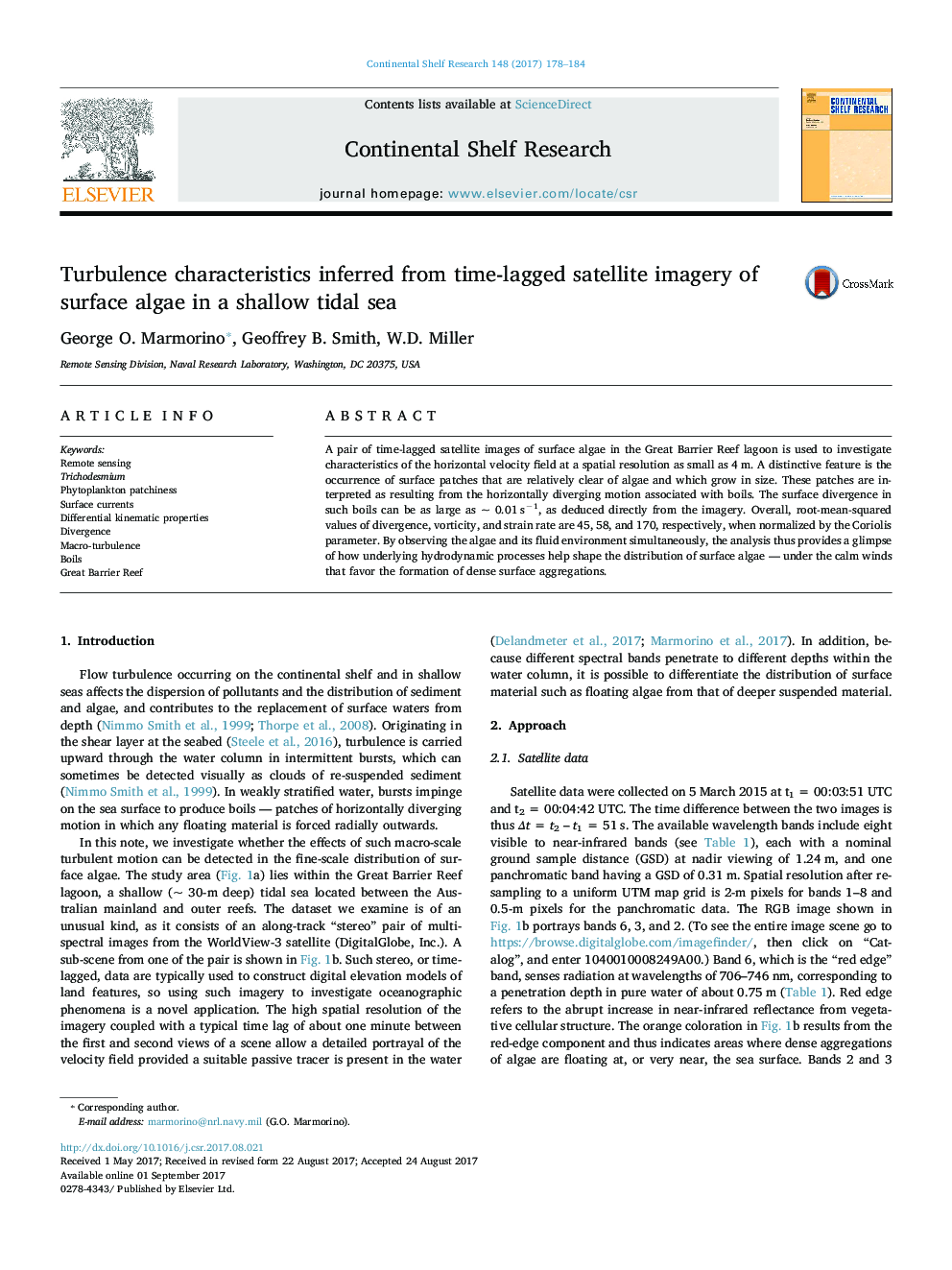| Article ID | Journal | Published Year | Pages | File Type |
|---|---|---|---|---|
| 5764537 | Continental Shelf Research | 2017 | 7 Pages |
â¢A high-resolution velocity field can be derived from a “stereo” pair of satellite images of surface algae.â¢Root-mean-squared values of divergence, vorticity, and strain rate are 45, 58, and 170 times the Coriolis parameter.â¢Bottom-derived macro-turbulence shapes the distribution of surface algae.
A pair of time-lagged satellite images of surface algae in the Great Barrier Reef lagoon is used to investigate characteristics of the horizontal velocity field at a spatial resolution as small as 4Â m. A distinctive feature is the occurrence of surface patches that are relatively clear of algae and which grow in size. These patches are interpreted as resulting from the horizontally diverging motion associated with boils. The surface divergence in such boils can be as large as ~ 0.01Â sâ1, as deduced directly from the imagery. Overall, root-mean-squared values of divergence, vorticity, and strain rate are 45, 58, and 170, respectively, when normalized by the Coriolis parameter. By observing the algae and its fluid environment simultaneously, the analysis thus provides a glimpse of how underlying hydrodynamic processes help shape the distribution of surface algae - under the calm winds that favor the formation of dense surface aggregations.
